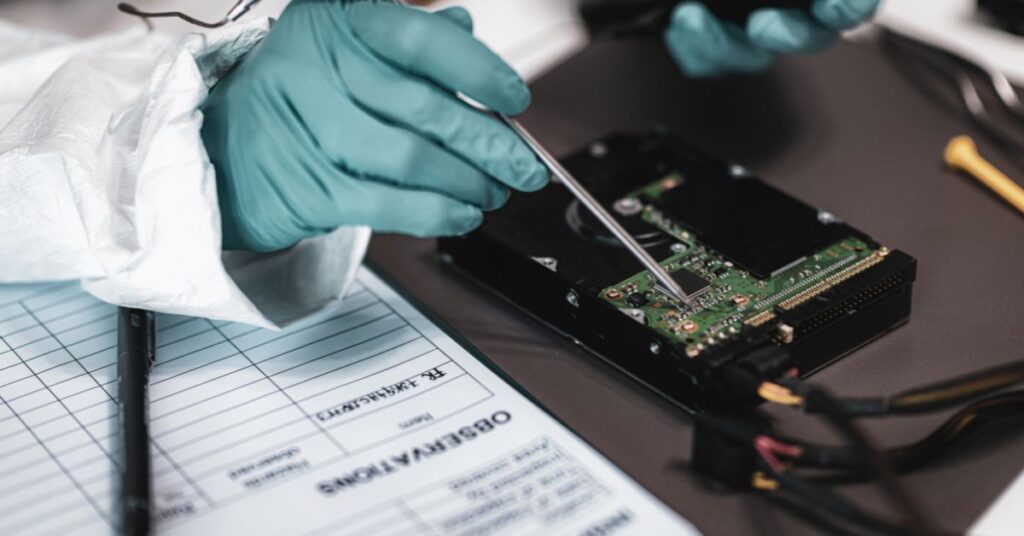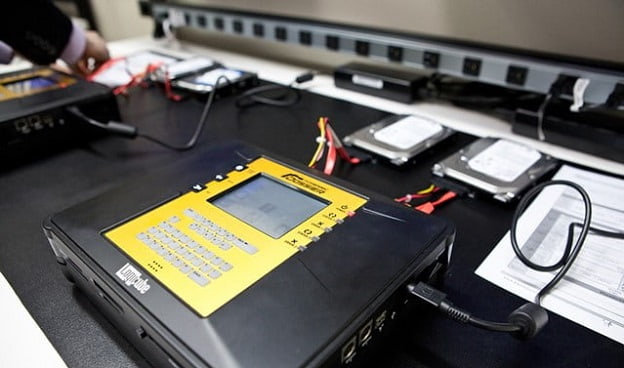What Is Digital Forensics ?

Digital forensics is an important field that has recently become more prevalent in society. It is the process of uncovering, collecting, and potentially analyzing digital data for the purpose of identifying or proving a crime. Whether it involves finding or eliminating potential evidence on hard drives, tracking ransomware attacks to their source, exposing fraud involving emails, or saving personal communications that have been intentionally deleted; Digital Forensics specialists help solve complex mysteries while protecting critical information. By combing through the seemingly chaotic digital landscape criminals leave behind; evidence can be discovered and presented in court to bring justice to those who break laws and cause harm to individuals by engaging in illegal activities online. This blog post will explore what digital forensics entails as well as how individuals can leverage this service for future proofing systems against attackers.
Definition of digital forensics – the process of examining digital media for evidence of criminal activity
Digital forensics is an ever expanding field and encompasses many different disciplines. At its core, digital forensics involves uncovering evidence from a variety of sources including computers, cell phones, tablets, servers, networks and storage media. It requires forensic professionals to employ principles of computer science and engineering in order to collect evidence that can be presented in court. This evidence can include text messages, emails, chat logs and user activity logs that have been collected from a variety of sources in order to prove or disprove events that took place on digital devices.
The goal of digital forensics is to not only identify the source of illegal activities but also to reconstruct what happened during an attack and provide evidence that can be used to build a case in a court of law. In addition, digital forensics also helps organizations identify and analyze weaknesses in their systems so that they can better protect themselves against future attacks. With the rise of cybercrime, it’s no surprise that digital forensics has become a crucial part of law enforcement efforts.
Overview of types of digital forensics – computer forensics, smartphone forensics, network forensics, and database forensics

Digital forensics has several types, one of which is computer forensics that involves the analysis of digital devices like laptops and desktops. The goal is to recover evidence and trace digital footprints.. Smartphone forensics involves the extraction of data from mobile devices to aid in investigations. Network forensics is concerned with analyzing network traffic to identify potential security breaches or other suspicious activity. Finally, database forensics involves the analysis of databases to detect tampering or unauthorized access. Digital forensics services can help businesses and individuals to protect their data and investigate potential security incidents.
Common techniques used in digital forensics – imaging, data carving, hash analysis, timeline analysis
When it comes to digital forensics, there are several techniques that experts use to uncover digital evidence. Such as imaging, data carving, hash analysis, and timeline analysis, to name a few. Imaging is the creation of a read-only copy of a digital device for preservation. Data carving involves extracting files from unallocated space within the device. Hash analysis entails verifying the integrity of the digital data. Finally, Timeline analysis involves the creation of a chronological timeline of activities that occurred within the device. These techniques and more make digital forensics a crucial tool in investigating and solving cyber crimes.
Advantages and disadvantages of using digital forensics – speed and accuracy vs cost and complexity
Digital forensics, the practice of investigating digital devices and data, can provide many advantages to a company in need of investigating a crime or other digital wrongdoing, such as employee misconduct. One of the main advantages of using digital forensics is its speed and accuracy. With the right tools and expertise, investigators can sift through vast amounts of data quickly and with precision, enabling companies to get to the bottom of a problem more efficiently. However, there are also some downsides to using digital forensics, including the cost and complexity of the process. Digital forensics companies often charge a premium for their expertise and tools, and the complexity of the process can make it difficult and time-consuming for some companies to implement. Each organization must consider the advantages and disadvantages of digital forensics and determine if it meets their specific requirements.
Read this too: Small Business Cyber Security Tips
Case studies of successful investigations using digital forensics

Digital forensics is becoming increasingly important for organizations looking to protect themselves from cybercrime. Here are a few case studies that demonstrate the effectiveness of digital forensics in resolving criminal cases:
1. A cyber-crime investigation conducted by the FBI involved analyzing a single laptop computer in order to trace the source of illegal funds. Through the use of digital forensics techniques such as data carving and timeline analysis, law enforcement was able to identify the criminals behind the scam and bring them to justice.
2. In another case, a business suspected employee fraud but lacked evidence for a conviction. After analyzing hard drive images with specialized software, digital forensics investigators recovered critical financial records that implicated the employee in the crime and allowed the business to take legal action.
3. In a third example, police used digital forensics tools to analyze a laptop found at a crime scene. The computer contained evidence that linked the suspect to the crime, resulting in an arrest and conviction.
Tips for staying safe online to avoid the need for digital forensics

The ever-expanding digital world has the potential to enrich our lives in countless ways, but it also comes with its own set of risks. Hackers are always coming up with fresh tactics to invade digital devices and obtain data or cause harm. To avoid the need for digital forensics companies to investigate a security breach, it’s important to adhere to some basic safety practices when using the internet.
Here are some tips for staying safe online:
1. Use strong passwords and two-factor authentication whenever possible. This adds an extra layer of security to your accounts.
2. Regularly update software and operating systems to patch any security vulnerabilities.
3. Be aware of phishing emails and other types of online scams. Do not open links or attachments from untrusted sources, as they could be malicious.
4. Use secure WiFi networks when possible, as public networks are more vulnerable to attack.
5. Make sure the websites you visit use secure connections (HTTPS).
6. Backup your data regularly and store it in a secure location.
Following these tips can help you avoid becoming a victim of cybercrime and reduce the need for digital forensics investigations.
Conclusion
Digital forensics helps law enforcement to investigate criminal activity by examining digital media for evidence. It is a crucial tool in their investigations.The four different types of digital forensics, computer, smartphone, network, and database forensics each use unique techniques to gather data from a variety of sources. Although digital forensics has many advantages such as speed and accuracy, it also has its drawbacks: it can be time-consuming and costly. Using the right strategy based on the case requirements is essential when employing this complicated yet powerful tool. Through examining the various case studies we see how digital forensics can help provide investigators with helpful evidence that can ultimately lead to a successful investigation. However, we must not forget that taking safety measures such as using strong passwords and updating security protocols are the best strategies for staying out of trouble online and avoiding the need for digital forensic investigations altogether. So let’s raise awareness about cybercrime prevention to ensure that digital media remains safe!





